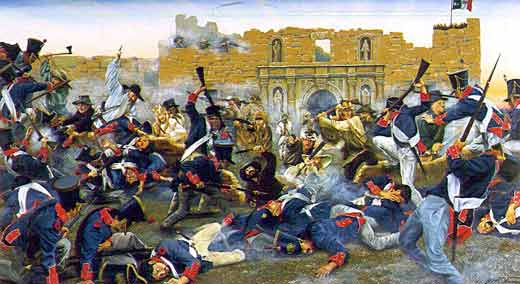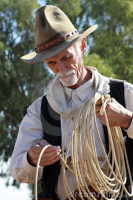 When I was a kid I was fascinated by the map of the United States (and Confederate States). Having grown up in the East, the idea of Texas, way out west, fascinated me and I wanted to see it, to go there, to experience it myself. Looking at photos is one thing. Seeing something in real life, being there and experiencing it is something else.
When I was a kid I was fascinated by the map of the United States (and Confederate States). Having grown up in the East, the idea of Texas, way out west, fascinated me and I wanted to see it, to go there, to experience it myself. Looking at photos is one thing. Seeing something in real life, being there and experiencing it is something else.
You can look at a million pictures of the Grand Canyon and that’s great—but being there, even if only once, and standing there yourself on the South Rim and looking at it beats all the photos in the world.
It’s the same thing with Texas. The photos are great, but the personal experience is infinitely better. The first time I was in Texas was in 1960, eons ago for you younger folks. Just a few years before that Texas had suffered a horrible drought that lasted around seven years. You have to understand, in Texas, a drought doesn’t mean it never rains. What it means is that when it does rain, it doesn’t rain enough to get you through until the next time it rains—and you repeat the same process all over again. If you want to read something really good about that time period in West Texas, read Elmer Kelton’s The Time It Never Rained. Kelton was born on a ranch in West Texas. His father was a ranch foreman so Kelton knows what he is talking about.
At any rate, 1960 was my first venture into Texas (thankfully not my last). Another man and I went through Texas from north to south on our way to Mexico. Looking back at the journal I kept of the trip, I marveled at how many of the small towns in Oklahoma and Texas resembled some of the western towns you saw in television programs. That was then. I doubt much of it is that way anymore, although back in 2001 my wife and I visited some good friends that lived just outside of Saint Jo, Texas, not far from the Red River that borders Oklahoma and the town of Saint Jo looked pretty much like the towns I remembered on my first trip to Texas.
There are some things you remember on a trip like that. We were looking for Lockhart State Park near Lockhart, Texas to camp for the night. Signs pointing you to the state park were rather scarce but we got on what we thought was the right road and continued on. By then it was getting dark and you couldn’t see your hand in front of your face. Finally we came to a big stretch of grass that seemed to go on aways. By that time it was ten thirty at night and we were both beat and we assumed that we must be at least at the edge of the state park so we pulled off the road and set up our tents in the grass and just went to sleep.
Came “the dawn’s early light” and we rolled out to see what the park looked like in daylight. Only problem was, there was no park. Turned out we had pulled off the road onto someone’s big front lawn and we could see his house way back in the distance. His driveway was about 200 feet the other side of us and here he came down the driveway in his car. We thought, “boy, is he going to be ticked at us for camping on his front lawn” (even though it was a big front lawn). Didn’t seem he was, though. He just stuck his hand out the window and waved at us and off he went. We wondered if other people looking for the state park had done the same thing and he was used to it. We never did find the state park. It’s still on the Texas state maps so I assume it’s there—somewhere! I hope they have better signs pointing it out today than they had in 1960.
 Getting into San Antonio, we wanted to see the Alamo. San Antonio was a pretty good-sized city even then and we had to park aways away from the Alamo and walk. This the only time I was ever there, never had the opportunity to go back, but I never forgot it. We went through most of it, no guided tours in those days. I don’t even recall if we paid admission or not There were several old guns and other relics on display and one thing I noticed—not many people were there besides us, but no one spoke loudly or made unnecessary noise. It was like a shrine and you unconsciously spoke softly and reverently in there. This was where Crockett, Bowie, Travis and the other 180 plus gave their lives for Texas independence. They had the chance to get out when they knew no help was coming. They stayed, all but one man I am told. I remember even today, the old song Tex Ritter sang decades ago and the chorus—“Hi-up, Santy Anna, we’re killing your soldiers below, so the rest of Texas will know, and remember the Alamo!” I often wonder today how much we remember—not enough I’m afraid.
Getting into San Antonio, we wanted to see the Alamo. San Antonio was a pretty good-sized city even then and we had to park aways away from the Alamo and walk. This the only time I was ever there, never had the opportunity to go back, but I never forgot it. We went through most of it, no guided tours in those days. I don’t even recall if we paid admission or not There were several old guns and other relics on display and one thing I noticed—not many people were there besides us, but no one spoke loudly or made unnecessary noise. It was like a shrine and you unconsciously spoke softly and reverently in there. This was where Crockett, Bowie, Travis and the other 180 plus gave their lives for Texas independence. They had the chance to get out when they knew no help was coming. They stayed, all but one man I am told. I remember even today, the old song Tex Ritter sang decades ago and the chorus—“Hi-up, Santy Anna, we’re killing your soldiers below, so the rest of Texas will know, and remember the Alamo!” I often wonder today how much we remember—not enough I’m afraid.
I have often wondered—how many of us today would have the courage to cross Travis’ line in the dirt, knowing if we did, we were not going to get out alive. In this age of rampant political correctness (cultural Marxism) I really wonder. And I wonder, in many cases, if we are really worthy of what our ancestors fought to preserve for us—God-given liberty. Only the Lord knows.
May 17, 2018
 ~ The Author ~
~ The Author ~
Al Benson Jr. is the editor and publisher of “The Copperhead Chronicle“, a quarterly newsletter that presents history from a pro-Southern and Christian perspective. He has written for several publications over the years. His articles have appeared in “The National Educator,” “The Free Magnolia,” and the “Southern Patriot.” I addition to that he was the editor of, and wrote for, “The Christian Educator” for several years. In addition to The Copperhead Chronicles, Al also maintains Revised History.
He is currently a member of the Confederate Society of America and the Sons of Confederate Veterans, and has, in the past, been a member of the John Birch Society. He is the co-author, along with Walter D. Kennedy, of the book “Lincoln’s Marxists” and he has written for several Internet sites as well as authoring a series of booklets, with tests, dealing with the War of Northern Aggression, for home school students.
He and his wife now live in northern Louisiana.
Mr. Benson is a highly respected scholar and writer and has graciously allowed Metropolis Café to publish his works. We are proud to have his involvement with this project.

Didn’t spend a whole lot of time there; just the 6 weeks of basic training, (which didn’t give me much time to get off Lackland and see Texas), and the 9 weeks of technical training at Sheppard AFB near Wichita Falls. But the time I did go off base I enjoyed. There were those, and for some odd reason they were typically Yankees, who did not get along well with the locals; but I had no problems there. The people were friendly and outgoing and I enjoyed the time I spent in Texas….aside from Drill Instructors screaming at me that is.